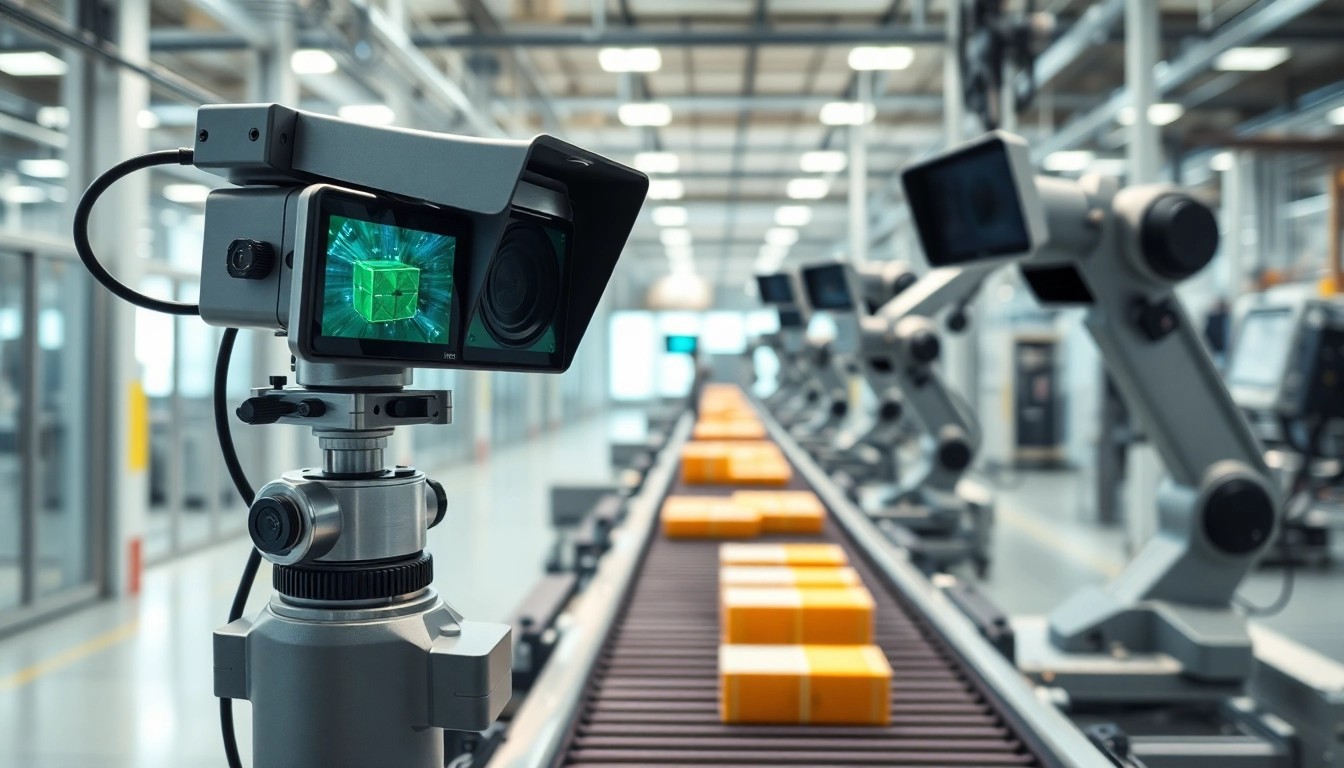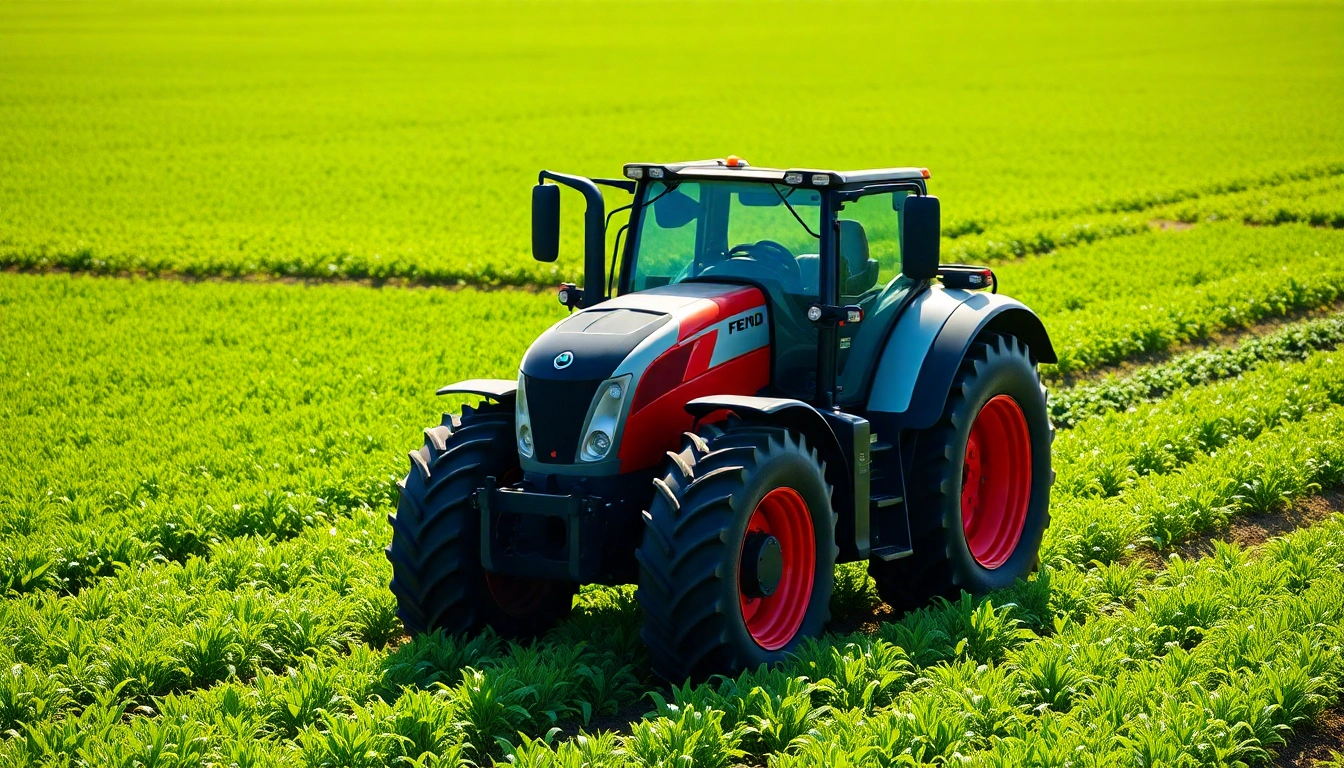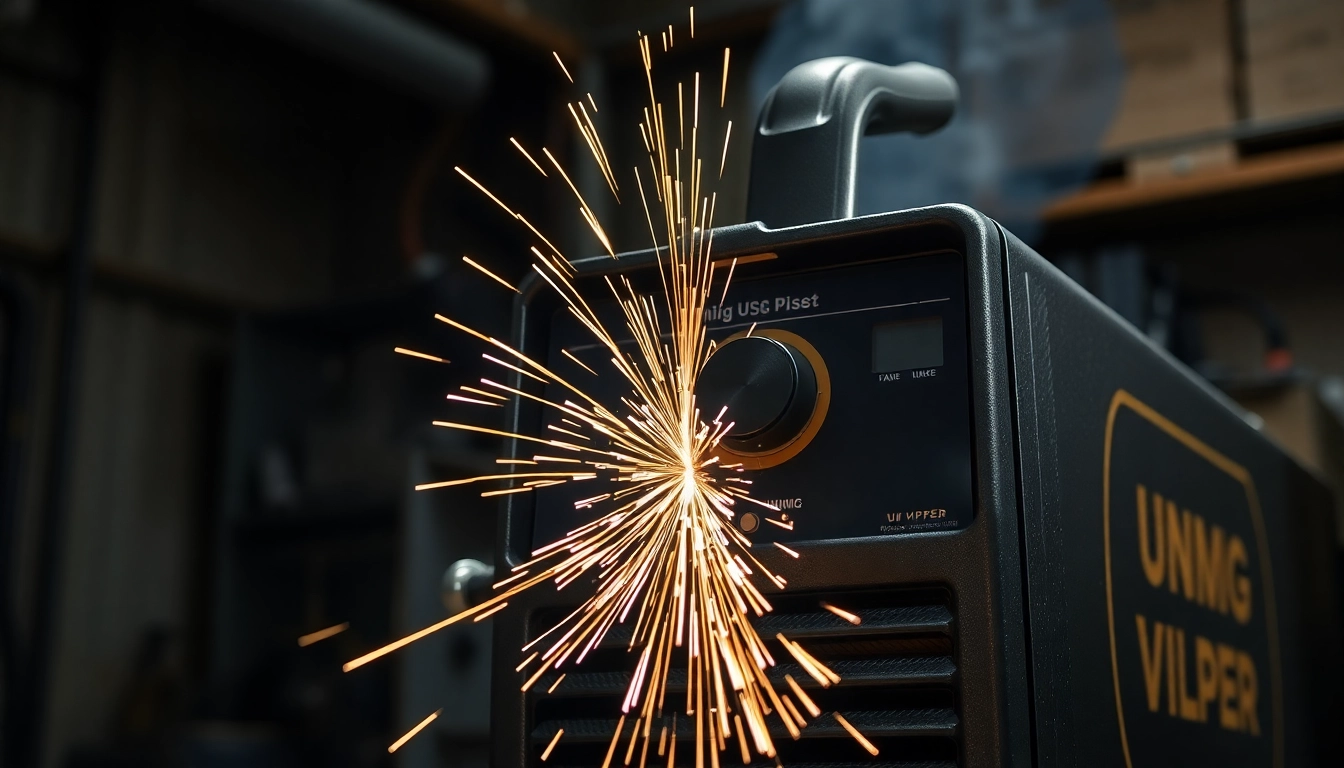Introduction to Machine Vision
In the rapidly evolving landscape of industrial automation, machine vision has emerged as a critical technology, enabling machines to perceive and interpret visual information just as humans do. This transformative capability allows for the automation of complex tasks ranging from quality inspection to the guidance of autonomous robots. Understanding the intricacies of machine vision is essential for businesses seeking to enhance efficiency and reliability in their operations.
What is Machine Vision?
Machine vision refers to the technology that enables machines to interpret visual information from the world around them. Unlike traditional vision systems that may rely solely on human perception, machine vision integrates various components such as cameras, lighting, and software algorithms to analyze images and make decisions based on defined criteria. This technology operates on the principles of capturing, processing, and analyzing visual data, applied across a multitude of industries including manufacturing, agriculture, and healthcare.
The Importance of Machine Vision in Industry
The significance of machine vision cannot be overstated. It plays a pivotal role in enhancing productivity, improving quality control, and enabling real-time data analysis. By automating visual inspection processes, businesses can reduce human error and operational costs while increasing output quality and speed. Furthermore, as industries face rising global competition, adopting advanced technologies such as machine vision is crucial for maintaining a competitive edge.
Basic Components of Machine Vision Systems
A typical machine vision system comprises several key components:
- Cameras: High-resolution cameras are used to capture images of the object or scene being analyzed. These cameras can vary in type, including area scan, line scan, and 3D cameras, each suitable for different applications.
- Lighting: Proper lighting is essential for obtaining clear images. Various lighting techniques, such as backlighting and diffuse lighting, can be employed to enhance visibility and contrast.
- Processing Hardware: This includes computers or image processing units (IPUs) that handle the computational aspects of image analysis, allowing for swift decision-making.
- Software Algorithms: Advanced algorithms process captured images, identifying patterns, defects, or specific features, ultimately guiding the machine’s response based on predefined standards.
Applications of Machine Vision
Quality Control and Defect Detection
One of the primary applications of machine vision is in quality control and defect detection. Systems can be designed to visually inspect products for defects, ensuring only perfect items proceed down the production line. This capability not only improves product quality but also safeguards brand reputation and reduces waste.
For example, a manufacturer of electronic circuits can use machine vision to inspect solder joints on PCBs. A machine vision system can analyze the image of each joint against known good patterns, identifying any defects that may compromise functionality.
Automated Production Processes
Machine vision systems play a critical role in automating production processes by providing real-time data that informs operational adjustments. By monitoring the production line continuously, these systems can detect issues and trigger alarms or corrective actions, minimizing downtime and ensuring more efficient production flows.
Consider a packaging line for consumer goods where machine vision systems verify the labels, check fill levels, and ensure correct packaging configurations. Such automation reduces manual checks, speeds up production, and ensures that only correctly packaged products reach consumers.
Machine Vision in Robotics
In robotics, machine vision enables machines to navigate and perform tasks within dynamic environments. Robots equipped with vision systems can recognize objects, avoid obstacles, and even interact with humans safely. This advancement is especially notable in warehouses and factories, where collaborative robots (cobots) work alongside human workers, enhancing productivity through precise machine guidance.
For example, autonomous mobile robots (AMRs) in a warehouse can scan their surroundings to identify the location of goods, maneuver around obstacles, and assist in inventory management, thereby streamlining logistics and improving operational efficiency.
Types of Machine Vision Systems
2D and 3D Machine Vision Systems
Machine vision systems are classified primarily into 2D and 3D systems, both serving distinct applications. 2D machine vision is widely utilized for surface inspection tasks, where flat images suffice to gauge quality or detect flaws. These systems are often simpler and more cost-effective, suitable for applications like barcode reading and dimensional inspection.
In contrast, 3D machine vision systems offer depth perception, allowing for more complex analysis and understanding of an object’s geometry. This capability is critical in industries such as automotive and medical device manufacturing, where precision is paramount. 3D systems use various technologies, including laser triangulation and structured light, to create detailed three-dimensional models of objects.
Smart Cameras vs. Traditional Cameras
Smart cameras have gained traction in the realm of machine vision. Unlike traditional cameras, which require a separate processing unit to analyze images, smart cameras integrate both image capture and processing capabilities in a single unit. This integration reduces system complexity and enhances deployment flexibility, allowing for immediate image processing and response.
This innovation is particularly useful in compact spaces where traditional setups might be impractical, such as in the inspection of small components on a production line. Smart cameras can function independently, making them ideal for applications that require high speed and efficiency.
Comparison of Machine Vision and Computer Vision
While the terms machine vision and computer vision are often used interchangeably, they refer to different concepts. Machine vision typically focuses on industrial applications, primarily involving automated inspection and measurement tasks. In contrast, computer vision encompasses broader capabilities, including the processing and analysis of images for various applications, such as facial recognition or medical imaging.
In practical terms, machine vision may utilize computer vision algorithms as part of its workflow but is specifically tailored for manufacturing and automation challenges, emphasizing operational efficiency and reliability.
Integrating Machine Vision into Your Workflow
Steps to Implementing Machine Vision
Integrating machine vision into an existing production workflow is a multifaceted process that requires careful planning and execution. The initial steps include:
- Needs Assessment: Analyze specific requirements and objectives. Determine what problems machine vision will solve or what processes can be enhanced.
- System Selection: Based on the assessment, choose the appropriate type of machine vision system (2D or 3D) and the components required for the application.
- Integration Planning: Develop a detailed integration plan that coordinates the machine vision system with existing equipment and processes.
- Testing and Calibration: Test the machine vision system in a controlled environment, calibrating it for accuracy and reliability before deployment on the production line.
- Employee Training: Train staff on the use and maintenance of the system to ensure smooth operation and troubleshooting.
Choosing the Right Machine Vision System
Selecting the right machine vision system involves considering several critical factors:
- Application Requirements: Different applications may require varying specifications in terms of resolution, speed, and analysis capability.
- Scalability: The chosen system should be scalable to accommodate future needs or additional tasks.
- Budget Constraints: Analyzing costs versus benefits is crucial; selecting a system that delivers ROI within a solid time frame is essential.
- Vendor Support: Consider the level of support offered by the vendor prior to purchase. Strong support can ease integration and long-term maintenance.
Common Challenges in Machine Vision Implementation
While machine vision systems offer immense benefits, their implementation can pose several challenges. Common challenges include:
- Varied Lighting Conditions: Fluctuating lighting can impact image quality. Implementing controlled lighting solutions is key to mitigating this issue.
- Complexity of Integration: Integrating new systems with existing equipment often presents unforeseen complications.
- Operator Resistance: Employees may resist adopting new technologies. Providing training and demonstrating the benefits can help reduce resistance.
Addressing these challenges through pre-implementation studies and employee engagement initiatives can pave the way for successful machine vision integration.
The Future of Machine Vision Technology
Recent Innovations in Machine Vision
As industries continue to evolve, machine vision technology has been advancing rapidly. Recent innovations include the development of more robust AI algorithms that enhance image analysis capabilities. These advancements have been particularly beneficial in industries such as food processing, where machine vision ensures compliance with health standards and product integrity.
Furthermore, the integration of machine learning into machine vision has significantly improved defect detection rates and reduced false positives, refining overall inspection processes.
Trends in Machine Vision Applications
Looking ahead, trends indicate that the demand for machine vision will continue to rise across diverse sectors. The growing focus on smart factories and Industry 4.0 is propelling machine vision technologies as essential components for achieving automation and enhancing operational efficiency.
Additionally, the prevalence of the Internet of Things (IoT) is creating opportunities for machine vision systems to connect and share visual data in real-time, leading to smarter, more agile operational frameworks.
The Role of AI in Advancing Machine Vision
Artificial Intelligence (AI) plays a transformative role in the future of machine vision. AI-powered systems can learn from vast amounts of data, improving their predictive capabilities and enhancing analytical accuracy. This development means that machine vision systems will not only automate tasks but also adapt and optimize processes over time, making them invaluable assets to industrial operations.
In conclusion, as machine vision technology continues to evolve, its application will become ever more integrated within industrial workflows, driving efficiency, quality, and innovation in the manufacturing landscape.



